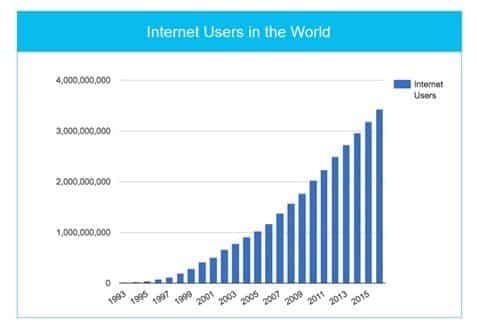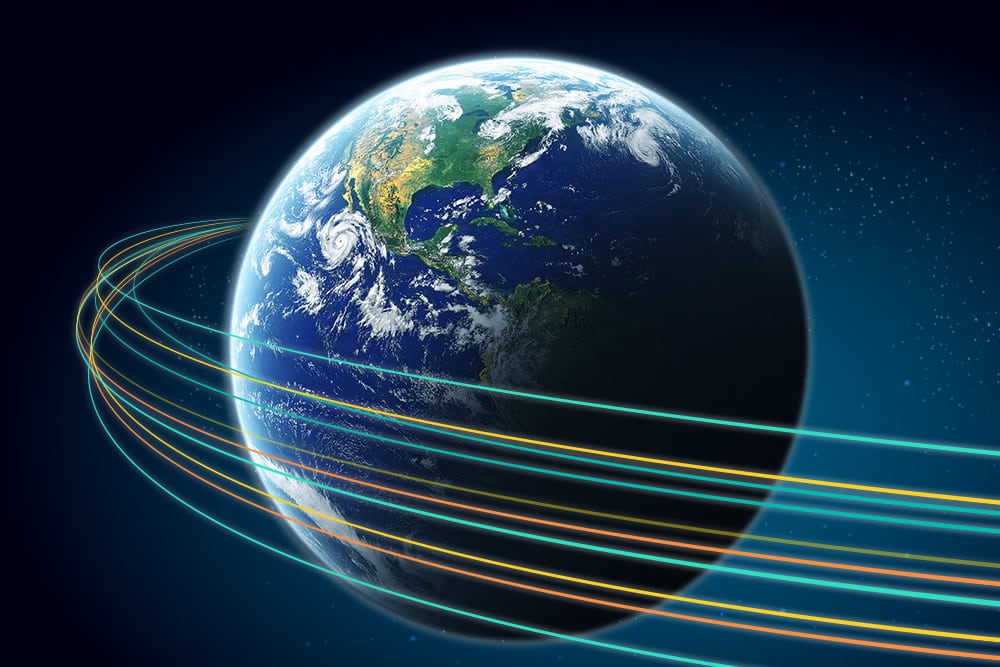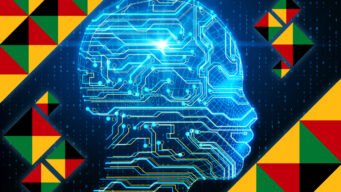Humankind’s quest for better and faster connectivity can be traced from early smoke signals to the invention of the smartphone.
Around 900 B.C., soldiers guarding the Great Wall of China used the first smoke signals. Passing signals from tower to tower to warn about enemy invaders, they were able to send a message as far as 300 miles in only a few hours. This was the earliest instance of the network effect. Today, extreme connectivity has annihilated both time and distance as barriers to communication. Hours have been compacted into seconds and the towers have transformed into nodes in a network.
The network is the Internet. Four billion people connect to it globally, in real time. It is one of the most significant technological disruptors in history. Even the recognized disruptors today—Amazon, Uber, Netflix—would be nothing without the Internet. Uber is a classic example. There is nothing disruptive about its technology; what is disruptive is how Uber is applying new business models to the Internet.

Half of the World’s Population Connected to a Common Network
The Internet introduced mass networking and access at scale. The technology has evolved so quickly that we can now take our connectivity with us, wherever we go. Mobility is ubiquitous, with smartphones connecting 7.5 billion people globally. Soon the number of smartphones will be equal to the world’s population.
Connectivity opens up economic opportunity.
Breakthroughs in wireless network innovation are driving economic and societal growth in radical, new ways. Fifth-generation (5G) wireless networks have the capability to support 1,000-fold gains in capacity. This will pave the way for connections for 100 billion devices, 10 gigabyte capacity, and end-user experiences based on extremely low latency and fast response times. Appearing sometime between 2020 and 2030, these networks will provide zero-distance connectivity between people and machines.
And here is where the next great digital innovation will emerge—where people and machines meet—literally, at the intersection of biology and technology. Consider smartphones today. We are already so dependent on them; they are extensions of ourselves. They emulate our senses with their capacity to listen (through intelligent assistants like Siri or speech recognition functionality), see using a camera, video, or even facial recognition, respond to our touch, and even act on command.
The boundaries between technology and people are blurring. Eventually, the connections between users and networks will surpass the speed of thought. Texting by thought will replace texting by smartphone. When combined with breakthroughs in the quantum teleportation of information (which are already taking place), this immediacy will give rise to machine-to-machine (M2M) communications and other technologies, like nanotechnology and micro-electronics.
Technology is already breaking the skin barrier. Our pets are microchipped. Military personnel are chipped for security purposes. Nanobots are examples of artificial intelligence (AI) that are the size of a nanometer and can be used for everything from repairing space satellites to killing cancerous cells when injected into the bloodstream.
Medical advancements will change the way we exchange information and deliver healthcare. They will also redefine what it means to be human.
As everything (including our pacemakers and 3D printed or cyborg limbs) connects to the Internet of Things, large amounts of personal information will be collected, exchanged, and assimilated, making the need to protect it critical. Governments will be required to protect this information, in many instances, as they collect it. When this happens, how will “informed consent” for use be given?
With half the world’s population connected, automation is another factor that will accelerate the pace of change. This is the topic of the next blog in this series.




